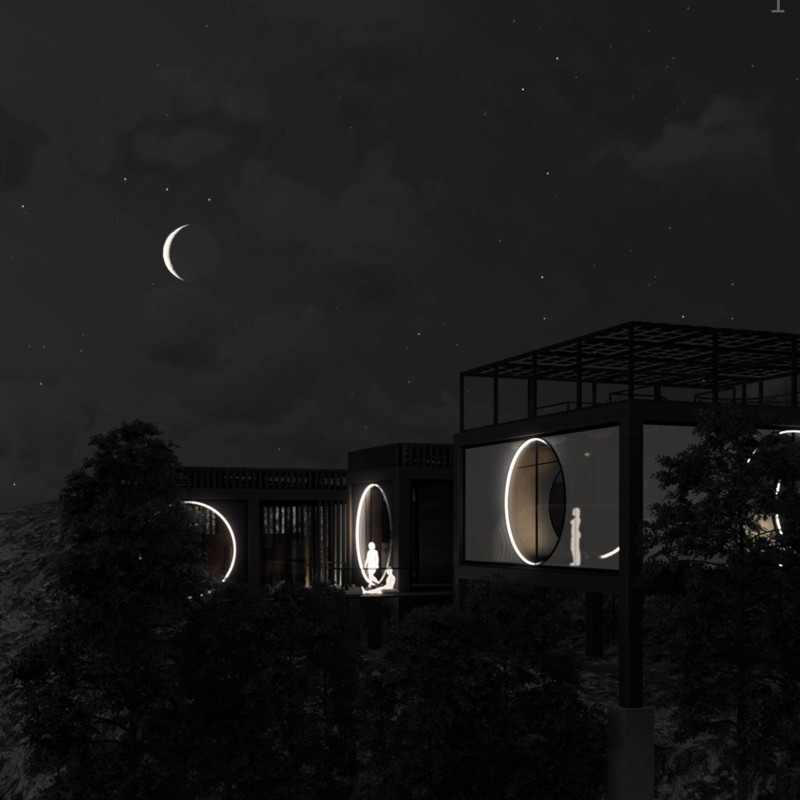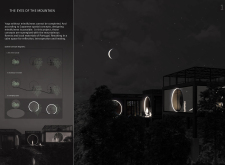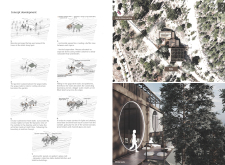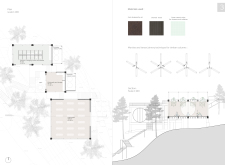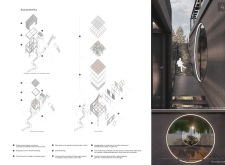5 key facts about this project
The architectural design includes various functional areas such as a central yoga studio, changing rooms, showers, and communal dining spaces. Each space is thoughtfully placed to enhance the overall experience of retreat participants. The yoga studio occupies a significant area of 100 m² with high ceilings, facilitating a sense of openness. The layout ensures privacy while maintaining easy access to the shared areas crucial for community engagement during the retreat.
Unique Design Approaches
The project incorporates several distinctive architectural features that set it apart from typical wellness retreats. The strategic massing of the buildings embraces existing trees, enhancing the natural setting while optimizing natural light exposure. This approach allows prominent views of the forest, encouraging mindfulness and connection with nature.
Materiality is a key aspect of this design. The building’s exterior is clad in darkened cork, a locally sourced and eco-friendly material, providing thermal insulation while maintaining aesthetic cohesion with the landscape. Charred wood elements are introduced to evoke a sense of renewal, reinforcing the symbolism of transformation. Green ceramic tiles in private areas not only contribute to a calming atmosphere but also underscore sustainability. Translucent channel glass is used to create abundant natural light within the interiors while maintaining privacy.
Integration of sustainable practices is evident in features such as rainwater harvesting systems and photovoltaic panels positioned discreetly on the roof, aiming to minimize the project's carbon footprint.
Architectural Details and Functional Areas
The project showcases crucial architectural details that enhance user experience. Circular windows frame views of the forest, serving both functional and aesthetic purposes. The architectural sections illustrate the balance between built form and landscape, revealing an intentional design that prioritizes ecological integration. The placement of changing rooms and storage areas reflects an understanding of user flow and privacy, further contributing to the retreat's functionality.
The design process reflects a commitment to maintaining a serene and restorative environment, characterized by thoughtful planning and material choices. Overall, "The Eyes of the Mountain" stands as an example of contemporary architecture harmonizing with nature, promoting health and well-being.
For further insights into the architectural plans, architectural sections, and detailed architectural designs of this project, explore the project presentation.


